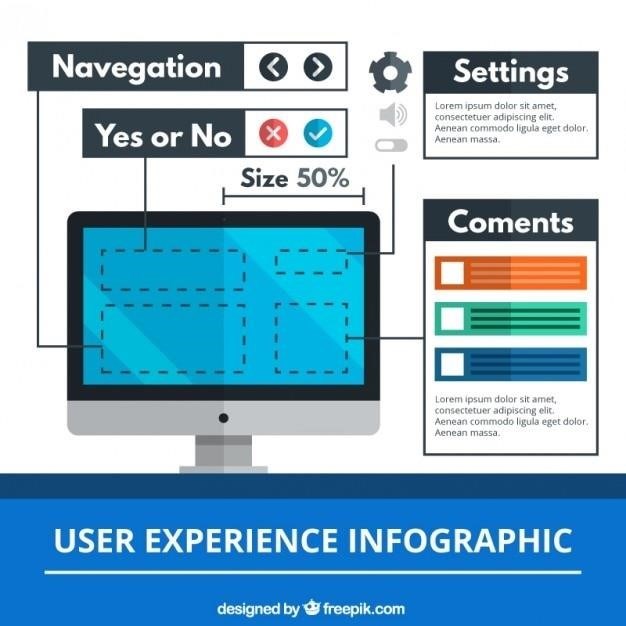ACLS Megacode Scenarios⁚ A Comprehensive Guide
ACLS megacode scenarios are simulated cardiac emergencies used in advanced cardiac life support (ACLS) courses to test healthcare providers’ abilities to manage medical situations. These scenarios are designed to provide a realistic and challenging learning experience, allowing participants to practice critical thinking, teamwork, and procedural skills in a safe and controlled environment. They are an essential component of ACLS training, helping to bridge the gap between theoretical knowledge and real-world application.
Introduction to ACLS Megacodes
ACLS megacodes are a crucial element of advanced cardiac life support (ACLS) training, providing a simulated environment for healthcare professionals to practice managing real-life cardiac emergencies. These scenarios are meticulously crafted to mimic the complexities and time pressures encountered during actual medical events, offering a safe and controlled platform for honing critical skills and knowledge. The purpose of ACLS megacodes is to bridge the gap between theoretical knowledge and practical application, ensuring that healthcare providers are well-prepared to handle the demands of cardiac emergencies.
During an ACLS megacode scenario, participants are tasked with applying their understanding of ACLS algorithms and procedures to a simulated patient experiencing a cardiac event. The scenarios typically involve a team of healthcare professionals, simulating the collaborative efforts required in a real-life medical setting. Participants are expected to work together, effectively communicate, and make timely decisions under pressure, mirroring the dynamic and often chaotic nature of cardiac emergencies.
The use of ACLS megacodes in training is vital for several reasons. First, they provide a realistic and immersive experience, allowing participants to engage in active learning and problem-solving rather than passively absorbing information. Second, they foster teamwork and communication skills, essential for successful patient care in a crisis. Third, they reinforce the importance of adhering to established ACLS protocols and algorithms, ensuring that healthcare providers are equipped with the necessary knowledge and skills to provide optimal care.
Types of ACLS Megacode Scenarios
ACLS megacode scenarios are designed to cover a wide spectrum of cardiac emergencies, encompassing both common and less frequent events. These scenarios are meticulously crafted to provide a comprehensive training experience, equipping healthcare providers with the skills and knowledge to handle diverse cardiac situations. The types of ACLS megacode scenarios typically encountered in training include⁚
- Respiratory Emergencies⁚ These scenarios focus on managing respiratory distress or failure, often presenting as a precursor to cardiac arrest. Participants are tasked with assessing the patient’s respiratory status, implementing appropriate interventions such as airway management and ventilation, and recognizing potential complications.
- Cardiac Arrest⁚ These scenarios simulate various types of cardiac arrest, including ventricular fibrillation (VF), ventricular tachycardia (VT), pulseless electrical activity (PEA), and asystole. Participants are expected to initiate CPR, administer medications, and utilize defibrillation or pacing as indicated, adhering to established ACLS guidelines.
- Prearrest Emergencies⁚ These scenarios simulate situations that can lead to cardiac arrest, including bradycardia, stable and unstable tachycardia, and acute coronary syndromes. Participants must recognize the warning signs, implement appropriate interventions, and effectively manage the patient’s condition to prevent progression to cardiac arrest.
- Stroke⁚ These scenarios focus on recognizing and managing stroke symptoms, emphasizing rapid assessment, timely interventions, and communication with the stroke team. Participants are expected to utilize the FAST mnemonic to assess stroke symptoms, initiate appropriate care, and ensure timely transport to a specialized stroke center.
By incorporating these diverse scenario types, ACLS training programs ensure that healthcare providers are equipped to effectively manage a wide range of cardiac emergencies, promoting optimal patient care and outcomes.
Common ACLS Megacode Scenario Examples
ACLS megacode scenarios often draw inspiration from real-life medical situations, providing a realistic and engaging learning experience for participants. Here are some common examples of ACLS megacode scenarios that are frequently utilized in training programs⁚
- Scenario 1⁚ Respiratory Emergency⁚ This scenario might involve a patient presenting with acute shortness of breath, wheezing, or stridor. Participants are expected to assess the patient’s respiratory status, administer supplemental oxygen, consider the need for airway management, and manage potential complications such as respiratory failure.
- Scenario 2⁚ Cardiac Arrest (Simple VF/VT): This scenario simulates a patient experiencing ventricular fibrillation or tachycardia. Participants are tasked with immediately initiating CPR, administering medications, and utilizing a defibrillator to restore a normal heart rhythm.
- Scenario 3⁚ Cardiac Arrest (Complex VF/VT): This scenario presents a more challenging cardiac arrest scenario, potentially involving multiple cardiac rhythms, medication administration challenges, or a prolonged arrest duration. Participants are expected to demonstrate advanced decision-making skills, teamwork, and effective communication to manage the complex situation.
- Scenario 4⁚ Prearrest Emergency (Bradycardia)⁚ This scenario might involve a patient with a slow heart rate. Participants are required to assess the patient’s hemodynamic stability, consider medication administration, and implement appropriate pacing strategies if necessary.
- Scenario 5⁚ Prearrest Emergency (Unstable Tachycardia)⁚ This scenario simulates a patient with a rapid heart rate and signs of instability. Participants are expected to assess the patient’s hemodynamic status, administer medications, and consider the need for synchronized cardioversion.
These are just a few examples of the many ACLS megacode scenarios available. The specific scenarios used in training may vary depending on the program’s focus and the participants’ skill level.
Scenario 1⁚ Respiratory Emergency
This scenario simulates a patient experiencing acute respiratory distress. The patient may present with symptoms such as shortness of breath, wheezing, stridor, or cyanosis. The scenario typically involves a patient with a history of respiratory conditions such as asthma, COPD, or pneumonia. The scenario may also involve a patient who has inhaled a foreign object or is experiencing anaphylaxis.

In this scenario, participants are tasked with assessing the patient’s respiratory status, providing supplemental oxygen, and managing airway patency. They may need to administer medications such as bronchodilators or corticosteroids to relieve airway obstruction. In severe cases, participants may need to intubate the patient and provide mechanical ventilation.
The scenario may also involve managing complications such as respiratory failure, cardiac arrest, or pneumothorax. Participants will be evaluated on their ability to recognize and manage these complications effectively. This scenario emphasizes the importance of early recognition and intervention in managing respiratory emergencies.
Scenario 2⁚ Cardiac Arrest (Simple VF/VT)
This scenario focuses on the management of ventricular fibrillation (VF) or ventricular tachycardia (VT) without complicating factors. The patient is typically found unresponsive and pulseless, with a rhythm of VF or VT on the electrocardiogram (ECG). This scenario simulates a common cardiac arrest event, emphasizing the importance of immediate recognition and initiation of cardiopulmonary resuscitation (CPR) and defibrillation.
Participants are expected to perform high-quality CPR, deliver shocks with the automated external defibrillator (AED) or manual defibrillator, and administer medications such as epinephrine and amiodarone. The scenario may involve multiple rounds of CPR and defibrillation, reflecting the challenges of managing a cardiac arrest event. Participants will be evaluated on their ability to follow the ACLS algorithm for VF/VT, including the correct sequence of interventions and the appropriate dosages of medications.
This scenario emphasizes the importance of teamwork, clear communication, and the ability to adapt to evolving situations. Participants must work effectively as a team, communicate clearly with each other, and adjust their actions based on the patient’s response to treatment. This scenario provides a valuable opportunity to practice essential skills for managing cardiac arrest, a critical medical emergency.
Scenario 3⁚ Cardiac Arrest (Complex VF/VT)
This scenario presents a more complex cardiac arrest situation, involving VF or VT with additional complicating factors. These factors could include a history of significant medical conditions, such as coronary artery disease, heart failure, or diabetes, or the presence of multiple medications. The patient may also have a history of previous cardiac arrest events, increasing the complexity of the scenario.
Participants are expected to manage the complex medical history, assess the patient’s condition, and implement the appropriate ACLS interventions. This may involve adjusting the ACLS algorithm based on the patient’s specific needs, considering the potential impact of medications, and managing any complications that may arise. The scenario emphasizes the importance of critical thinking, problem-solving, and the ability to adapt to changing circumstances.
This scenario offers a challenging learning experience, requiring participants to apply their knowledge and skills in a complex and dynamic setting. It simulates the complexities of real-world cardiac arrest events, where multiple factors can influence the patient’s condition and the course of treatment. Participants will be evaluated on their ability to prioritize interventions, manage potential complications, and effectively communicate with their team members.
Benefits of Using ACLS Megacode Scenarios
The use of ACLS megacode scenarios offers numerous benefits for healthcare providers, contributing to their development and proficiency in managing critical emergencies. By simulating real-life scenarios, these exercises provide a safe and controlled environment for participants to practice their skills, enhancing their confidence and competence in handling high-pressure situations.
ACLS megacode scenarios promote teamwork and communication among healthcare providers. Participants work collaboratively, simulating the dynamic environment of a real-life emergency, fostering effective communication, coordination, and delegation of tasks. This reinforces the importance of clear communication, leadership, and a cohesive team approach in critical care settings.
These scenarios also facilitate the development of critical thinking and problem-solving skills. Participants are challenged to analyze the patient’s condition, interpret vital signs, and make critical decisions based on the information presented. They must apply their knowledge of ACLS algorithms, assess the effectiveness of interventions, and adapt their approach based on changing circumstances, enhancing their clinical judgment and decision-making abilities.
Resources for ACLS Megacode Scenarios
Numerous resources are available to support the implementation and utilization of ACLS megacode scenarios in training programs. The American Heart Association (AHA) provides comprehensive guidelines, algorithms, and educational materials, including sample scenarios and checklists, to facilitate the development and delivery of effective ACLS training programs. These resources are invaluable for instructors and participants, ensuring adherence to current best practices and standards of care.
Online platforms and medical simulation companies offer a wide range of ACLS megacode scenario resources. These platforms provide access to pre-designed scenarios, customizable templates, and interactive simulations, allowing instructors to tailor training programs to specific learning objectives and target audiences. Additionally, these resources often include feedback mechanisms and analytics, enabling instructors to monitor participant performance and identify areas for improvement.
Textbooks and journals dedicated to ACLS and emergency medicine provide valuable insights into the development and implementation of ACLS megacode scenarios. These resources offer comprehensive reviews of ACLS algorithms, best practices for scenario design, and practical tips for conducting effective training sessions. By referencing these resources, instructors can stay abreast of the latest advancements in ACLS and ensure that their training programs are current and evidence-based.
Importance of ACLS Megacode Training
ACLS megacode training is a vital component of healthcare professional development, providing a crucial platform for enhancing critical thinking, teamwork, and procedural skills in high-pressure scenarios. These scenarios are designed to mirror real-life cardiac emergencies, bridging the gap between theoretical knowledge and practical application. Through immersive simulations, healthcare providers gain valuable experience in managing complex medical situations, improving their preparedness and confidence in responding effectively to real-world emergencies.
By engaging in ACLS megacode training, healthcare professionals develop a deeper understanding of ACLS algorithms, procedures, and best practices; They learn to effectively manage time, prioritize actions, and communicate effectively within a team setting. Furthermore, these scenarios provide opportunities for participants to practice decision-making under pressure, leading to improved clinical judgment and enhanced patient outcomes.
In conclusion, ACLS megacode training is essential for equipping healthcare providers with the necessary knowledge, skills, and confidence to manage cardiac emergencies effectively. By providing a safe and controlled environment for practicing critical thinking, teamwork, and procedural skills, these scenarios contribute significantly to improved patient care and overall healthcare outcomes.
